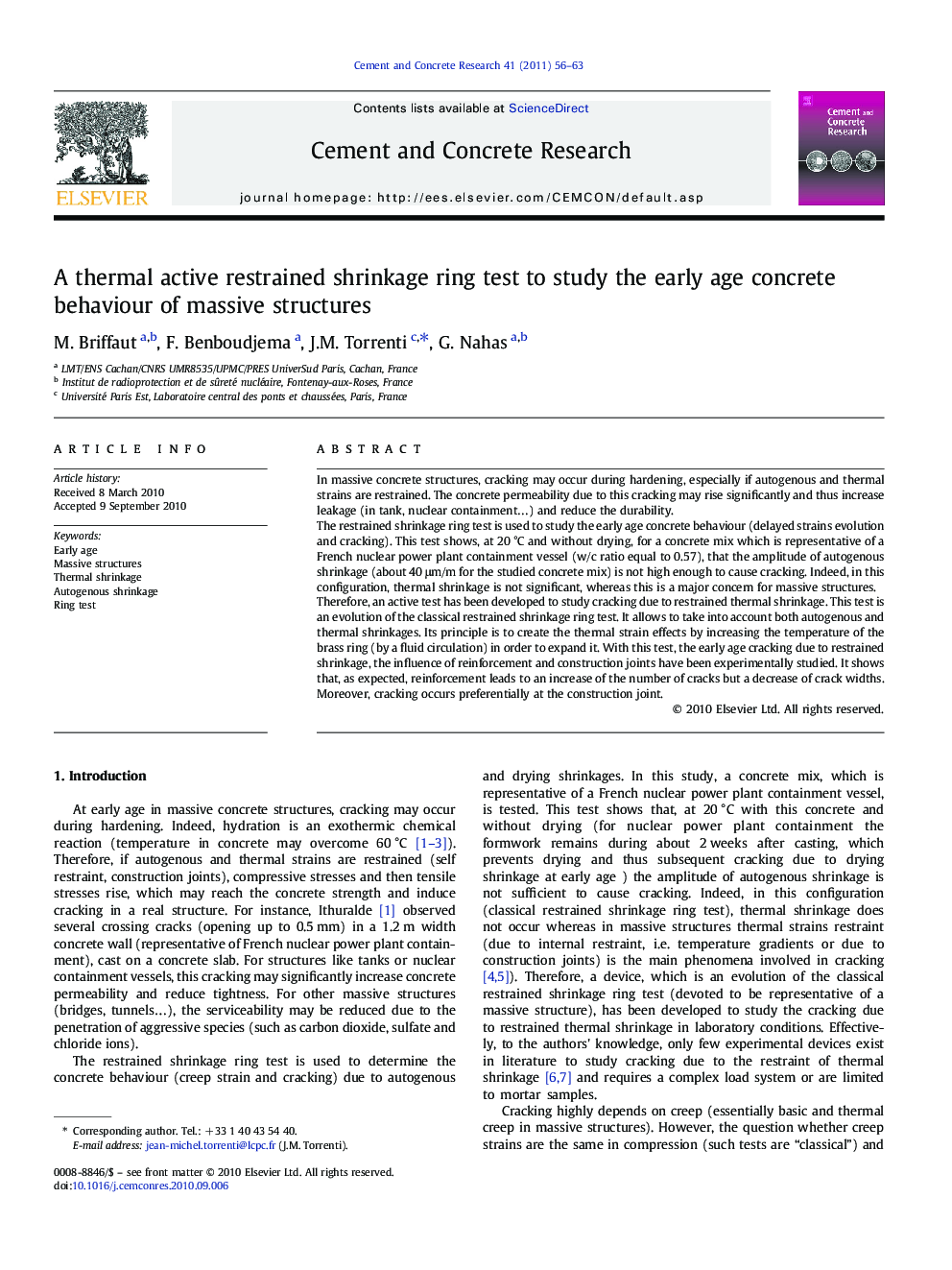| کد مقاله | کد نشریه | سال انتشار | مقاله انگلیسی | نسخه تمام متن |
|---|---|---|---|---|
| 1457083 | 989240 | 2011 | 8 صفحه PDF | دانلود رایگان |

In massive concrete structures, cracking may occur during hardening, especially if autogenous and thermal strains are restrained. The concrete permeability due to this cracking may rise significantly and thus increase leakage (in tank, nuclear containment…) and reduce the durability.The restrained shrinkage ring test is used to study the early age concrete behaviour (delayed strains evolution and cracking). This test shows, at 20 °C and without drying, for a concrete mix which is representative of a French nuclear power plant containment vessel (w/c ratio equal to 0.57), that the amplitude of autogenous shrinkage (about 40 μm/m for the studied concrete mix) is not high enough to cause cracking. Indeed, in this configuration, thermal shrinkage is not significant, whereas this is a major concern for massive structures.Therefore, an active test has been developed to study cracking due to restrained thermal shrinkage. This test is an evolution of the classical restrained shrinkage ring test. It allows to take into account both autogenous and thermal shrinkages. Its principle is to create the thermal strain effects by increasing the temperature of the brass ring (by a fluid circulation) in order to expand it. With this test, the early age cracking due to restrained shrinkage, the influence of reinforcement and construction joints have been experimentally studied. It shows that, as expected, reinforcement leads to an increase of the number of cracks but a decrease of crack widths. Moreover, cracking occurs preferentially at the construction joint.
Journal: Cement and Concrete Research - Volume 41, Issue 1, January 2011, Pages 56–63